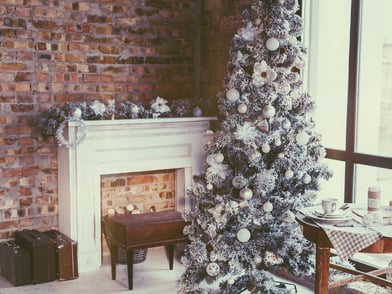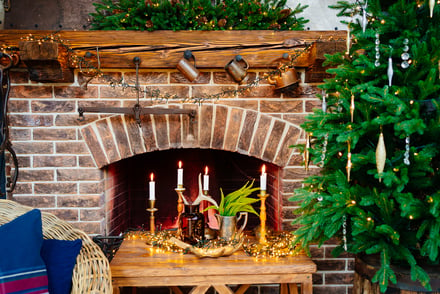After a stormy season in the DC area, owners of historic brick homes need to check their interior spaces for signs of water seepage. This is especially true for below-grade areas, including basements and storage areas. Just like in nature, water likes to run downhill and can erode a path along your brick, that will only get worse over time. Repairing existing problems right away is the most cost-effective method for preventing expensive future issues. Knowing what to look for will keep your home structurally sound and maintain a healthy living environment. Don’t let water seepage damage your interior brick.
Where Does the Water Come From?
Before you begin to assess the threat water poses to your walls, it’s a good idea to understand how water penetrates the interior walls of your historic brick home in the first place. Water moves in from the outside in three common places: your roof, your exterior mortar, and the ground against your foundation.
Leaks in your roof can result from missing or loose shingles, damaged soffit and fascia, or a compromised underlayment, often a result of winter ice dams.
The exterior mortar is constantly subjected to daily environmental stressors, such as sun, wind, humidity, rain, snow and hail. Over time, the elements can cause small cracks in the mortar, and water can find its way in. With each rainfall or snow melt, the water can move a little further, widening the crack and finally making its way inside.
The ground around your home is likely in direct contact with the brick behind it. If water isn’t properly channeled away from the foundation, it accumulates close to your house. It will seep into the ground, potentially making its way into the basement walls.
Thankfully, there are several ways to tell if water penetration is affecting your interior, and the tell-tale signs can usually be found with a thorough inspection.
How to Identify Water Seepage and Infiltration
If you have exposed brick walls, get up as close as you can to the wall and check the mortar for cracks or gaps. Both can be indications of water penetration, even if you don’t immediately see any water. You should also test the bricks to ensure they fit snugly and are not loose. Then, stand back and view the wall as a whole. You’ll want to look for darker, stained-looking sections of brick - these areas may also be cool or damp to the touch.
Another common sign is efflorescence, which is especially prevalent in basements. The white fuzzy coating results from natural salts being brought through to the brick by water. As the water partially dries, it leaves the salty residue. Efflorescence is a sure sign of a water damage concern, and you should call in a professional historic brick expert to determine the extent of the problem.
You can still inspect for water infiltration if your walls aren't exposed. Brown spots on the ceiling, brown streaks on the walls or bubbling and peeling paint are all indicators of water penetration. You should also check floors and baseboards for dampness, as well as around all window and door frames.
Hire an Expert to Fix Water Infiltration Problems
Water that penetrates through brick can cause cosmetic or structural damage and create significant health hazards like mildew and mold if not correctly addressed. To keep the air in your home safe, contact a historic brick expert at the first signs of water damage. They can thoroughly inspect and determine the source of the water penetration. Using traditional tuckpointing methods that are compatible with your historic brick, they can repair the area and stop the water from coming in, keeping your interior brick walls beautifully maintained, and giving you peace of mind.
As soon as you identify any signs of water infiltration, schedule a complimentary consultation with an expert on historic bricks, who can offer tuckpointing solutions that will keep your home structurally sound for years to come. Contact Renaissance Development for a complimentary consultation.
Don’t miss out on our special December Holiday Promotion. Proposals accepted and signed by December 31, 2023 will be discounted by an additional 15%. The discount is applicable to all of our expert services including interior and exterior tuckpointing.
Tags:
Interior brick walls, Water damage, Tuckpointing job, chimney inspection, preventive maintenance, old brick, mortar, lime mortar, causes of spalling, crumbling brick, historic brick home, historic brick, Old Brick Home in DC, Preventing water damage, brick structural integrity, Structural Integrity, Water damage to Brick, Preventing Water Damage to Brick, Seeping Water in Brick Walls12/14/23 8:45 AM


